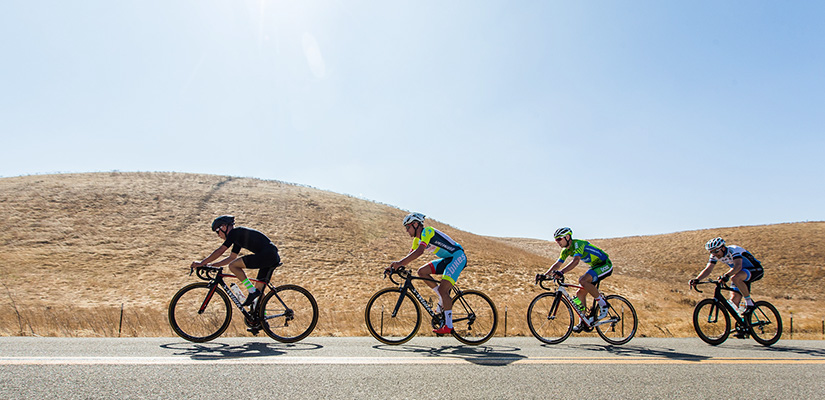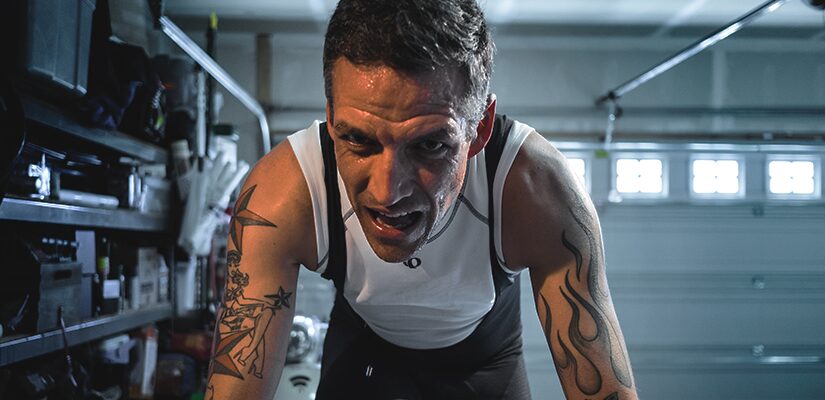3 Ways to Determine if You’re Following the Right Training Plan

It’s easy to choose which plan to follow based on your upcoming event. Deciding how much training your plan should consist of, however, isn’t always so obvious.
There are three aspects of your training that can tell you if you’re on the right path: the type of workouts you’re doing, the intensity of your workouts and often much you’re training.
Complete the Right Type of Workouts
Every workout you do should get you closer to your goals. For that to happen, the workouts in your training plan should increase strength and endurance, build specific types of fitness to help you succeed in your event and enhance your cycling formwork. Every TrainerRoad training plan handcrafted by our Head Coach Chad Timmerman supports these objectives (take a look at his training process that makes cyclists faster).
If you’re not following a TrainerRoad plan, you can examine your own workouts to ensure they follow Coach Chad’s recommendations. These are the basic types of workouts you should complete as you get closer to your specific cycling events.
Road Racers: Endurance, Sustained Power, VO2 max, High Power, Burst Power
Triathletes: Endurance, Sustained Power, Threshold, VO2 max
Off Road Racers: Threshold, VO2 max, High Power, Burst Power
Gran Fondo Riders: Endurance, Sustained Power, Threshold
Gauge The Intensity of Your Workouts
Power is the most effective way to measure your training because it’s a purely objective metric. By testing your Functional Threshold Power, you can determine the intensity of every workout you complete in your plan. This helps ensure all your workouts fall within the correct power zones.
Each of the seven power zones (as defined by Andrew Coggan) is defined by a percentage of your FTP and a specific training adaptation. Power zones allow you to measure the amount of training stress your body is undergoing while you train based on a percentage of your FTP. Together, your FTP and the power zone of each workout can show you whether you’re training at the right intensity.
If you don’t already know your FTP, you can take a TrainerRoad FTP test with an indoor trainer. If you don’t have an indoor trainer or a power meter, you can estimate your FTP with a TT assessment. You can also look at a power file or analyze training data from your power-meter software.
Find the Right Training Schedule for You
Your training volume is just as important as the type and intensity of your training. Training schedules are among the most common areas where cyclists over or underestimate their abilities, especially when they’re new to indoor training.
Just like TrainerRoad training plans, you can break up your training schedule into low, mid and high volumes. Based on your available training time and cycling fitness level, here’s what you should be shooting for:
Low-volume plans: three high-intensity workouts/week
Perfect for new cyclists, returning cyclists or cyclists recently recovered from an injury
Mid-volume plans: three high-intensity workouts and two aerobic workouts/week
Perfect for intermediate cyclists familiar to the increased intensity of indoor training.
High-volume plans: three high-intensity workouts and two aerobic workouts/week
Perfect for advanced cyclists with many available weekly training hours
Training too little or too much can negatively impact your training. There’s no single way to say whether you’re training too much or training too little, but there are a few signs that indicate your body isn’t handling your current amount of training stress as well as it should be.
Signs You’re Not Training Enough
Workouts seem too easy or boring. Not every workout has to be painful, but some form of discomfort is part of almost every type of workout whether it’s due to intensity, the duration of the intervals or the entire workout. Unless you’re riding for recovery, a little bit of discomfort is generally necessary.
Your fitness isn’t increasing. FTP changes don’t often come in leaps and bounds, but subtle increases in fitness should be evident week-in and week-out. If your power numbers have plateaued then you probably aren’t challenging yourself enough. Consider a greater challenge, whether it’s a higher-volume plan, an extra interval or two tacked onto your harder workouts, or a 3-5% increase in workout intensity. In all cases, successful completion of the workouts is still a key concern.
You’re skipping recovery weeks. The stress of a training plan should walk a narrow line of difficulty. If you’re ending several weeks of difficult training with no need for a rest week, you could probably turn up the intensity of your harder workouts by the same 3-5% — nothing too crazy. This could also be a time to reassess your FTP to check if your fitness has improved.
Signs You’re Training Too Much
You can’t finish a workout. Training sessions should be hard, and they should definitely push you to your limits — but they shouldn’t be impossible. In some instances you may need to bail on a workout, but If you’re having trouble completing anything harder than an easy recovery ride you need to stop and evaluate what’s going on. Nutrition, sleep, injury and other physical demands outside of training might also be playing a role in this area.
You’re missing your power targets. Okay, so you’re making it through your workout. But how’s the quality? On average, you should expect to hit about 90% of your power targets for a workout to be successful. If you’re hitting around 80% of your power targets, you’re doing okay but there’s room for improvement, and if you’re hitting 70% or less, your power targets are too high. In this case, try dropping the workout intensity by 5%.
This isn’t enough to drastically change the nature of any workout, but it’s often enough to get you through a rough day. If “rough days” are a routine for you, it might be time to take a few easy days, perhaps even a full recovery week and see if the added recovery gets you back on track.
You’re really looking forward to recovery weeks. Your body doesn’t only recover during recovery weeks — it’s recovering any time you’re not training. Longing for recovery weeks is one sign that your body might not be getting the recovery it needs between training sessions, and is entering a recovery deficit. If you’re in this position, the prescribed recovery week may not be light enough to facilitate thorough recovery. Instead, keep the entire week easy — only endurance rides with no high-intensity intervals. Maintain your regular routine (workout duration, workout schedule) but ease up on the intensity.
You’re seeing negative results. The last thing you want to see is that you’re getting worse after a month training, but this can be a telltale sign you’re not training correctly. If you’re getting the proper amount of sleep and nourishing your body well but failing to see any performance improvements, look to your training plan — it’s time to consider a lower volume that better suits your fitness level.
Choosing the right training plan requires more than just consistent training. Depending on your event, your schedule and your fitness level, your training plan can vary drastically. When you follow a structured TrainerRoad training plan designed by Chad Timmerman, you can train assured that you’re on schedule with the right type workouts and intensity. If you’re unsure about your training plan, use the three elements in this post to assess whether or not you’re on the right plan and to make adjustments accordingly.
Listen to Experts Discuss This Training Topic and More on the Ask a Cycling Coach Podcast
The cycling experts at TrainerRoad discussed how to evaluate your training plan during episode 51 of the Ask a Cycling Coach podcast. Listen below to hear exactly what they had to say.
Additional Notes
TrainerRoad’s Ask a Cycling Coach podcast is dedicated to making you a faster cyclist. It gives you the chance to get answers to your cycling and triathlon training questions from USAC certified coaches Chad Timmerman, Jonathan Lee and special guests. Learn more about other topics we covered in the latest episode with our resources below:
• Body fat analysis
• How to measure your body composition
• What is the best way to lose fat
• How to lose fat and gain muscle
• How do you compare to Chris Froome?
• Chris Froome’s VO2 Max, FTP and power to weight ratio
• Does poor quality sleep affect performance?
• Why measuring your training with mileage is pointless
• What is the best way to measure your training
• Why isn’t your training plan making you faster?
• What to do if you feel fatigued
• Which earbuds / headphones are best for indoor training
• Do aging athletes have to adjust their training plans?
• How to adjust your training for your age
• What does excessive salt buildup from sweat mean?
• Are salty sweat stains bad?
• How to use a smart trainer to warmup at a race
• How do you know when to start a race hard or go easy?
• Why positioning is so important in racing
• What course features or characteristics make positioning critical
• How to position yourself well in a race
• How to pace after a hard start
• Different ways to train for cyclocross
If you have a question that you’d like to ask Coach Chad, submit your question here. We’ll do our best to answer it on the next episode of the Ask a Cycling Coach podcast.
